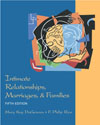Pregnancy can be detected by presumptive, probable, and positive signs and
may be confirmed by use of either biologic or immunologic tests. The birth date
may be calculated by using Naegele's formula. Men and women react differently
to pregnancy and prospective parenthood based on many factors, and they have
different developmental tasks during pregnancy. Prenatal care early in pregnancy
is critical. Women may experience minor discomforts or major complications.
Sexual relations tend to decline as pregnancy progresses. There are three periods
of prenatal development: the germinal, the embryonic, and the fetal periods.
Couples can prepare for childbirth physically, socially, and intellectually,
that can involve psychological and emotional conditioning. The most popular
prepared childbirth method is Lamaze. There are advantages and disadvantages
to home delivery, birthing centers, and hospital delivery. The three stages
of labor are dilation, childbirth, and passage of the afterbirth. Anesthesia
may be general, local, or regional. Induced or accelerated labor and cesarean
sections occur with sufficient medical reasons. The newborn infant is evaluated
using the Apgar Score system. Close intimate contact between the infant and
parents appears to facilitate bonding. While there are advantages to both breast-
and bottle-feeding, breast-feeding appears to provide greater benefits. Postpartum
blues are common, and adjustment to parenthood can depend on many factors. |



 2002 McGraw-Hill Higher Education
2002 McGraw-Hill Higher Education